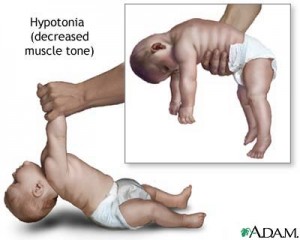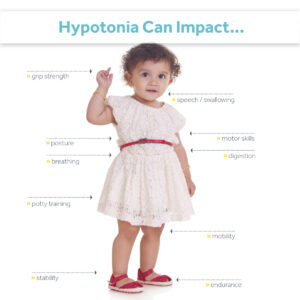What is Hypotonia?
 Hypotonia is a medical term for low muscle tone. In other words, it is the decreased amount of tone in a child’s muscles.
Hypotonia is a medical term for low muscle tone. In other words, it is the decreased amount of tone in a child’s muscles.
What is the Difference Between Muscle Tone and Muscle Strength?
Muscle Tone: is the level of tension in a muscle at rest1
- It is the potential ability to respond to an outside force, stretch or change in direction2
- Examples: protective responses, balance reactions, righting reactions
Muscle Strength: is the amount of force the muscle exerts against resistance1
- Ability to actively contract and create force2
- Examples: pushing, pulling, lifting, etc.
Characteristics of Low Muscle Tone
- Joint hypermobility and instability
- Poor Posture
- “W” sitting
- Difficulty holding head upright (propping head with hand)
- Slouched sitting posture
- Difficulty sitting for long periods of time
- Impaired Mobility
- May appear clumsy with gross motor activities
- May fatigue quickly; preference for sedentary activities
- Delayed Development of Gross Motor Skills (examples: crawling, jumping, climbing, etc.)
- Delayed Development of Fine Motor Skills (examples: grabbing toys, moving objects between hands, etc.)
- Breathing and Feeding Difficulties
- Ligament and Joint Laxity
Treatment Options
- Occupational Therapy: teach skills to help address day to day activities
- Physical Therapy: addresses muscle strength, coordination and posture
- Speech Therapy: addresses swallowing, feeding and speaking
Goals for Treatment:
-
- Improve postural responses and righting reactions
- Improve posture control
- Improve functional strength
- Facilitate motor planning
If you have concerns your child may be displaying signs of low muscle tone, please call our office today. We are happy to help.
Sources:
- SureStep
- DinoPT
Photos: pixabay, SureStep, Living With Cerebral Palsy
